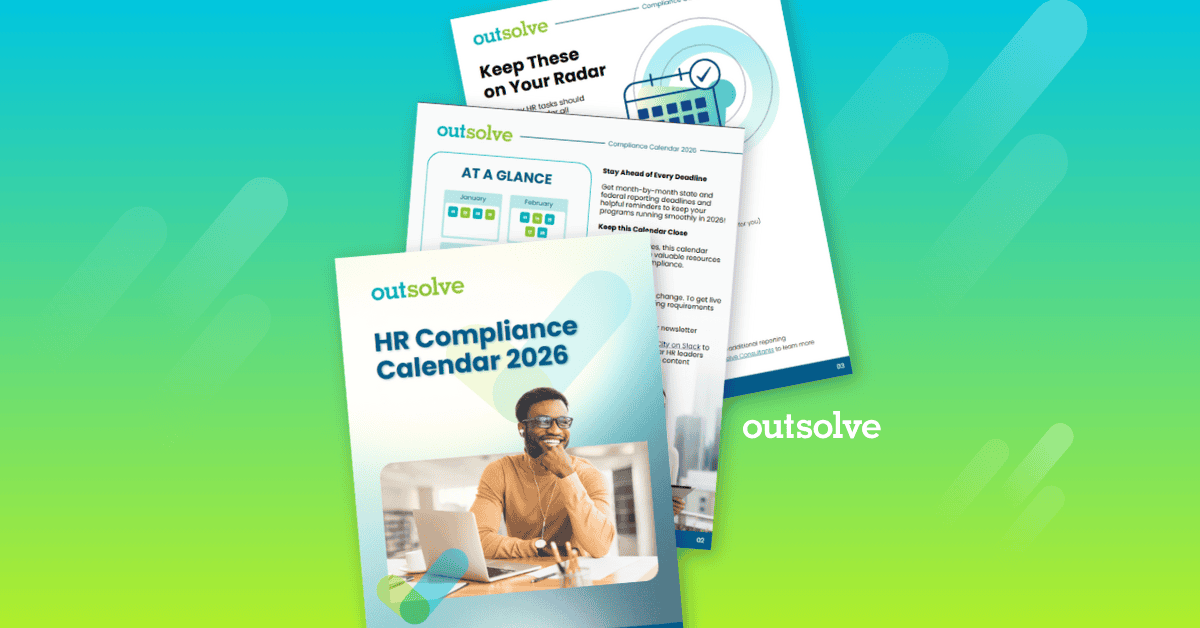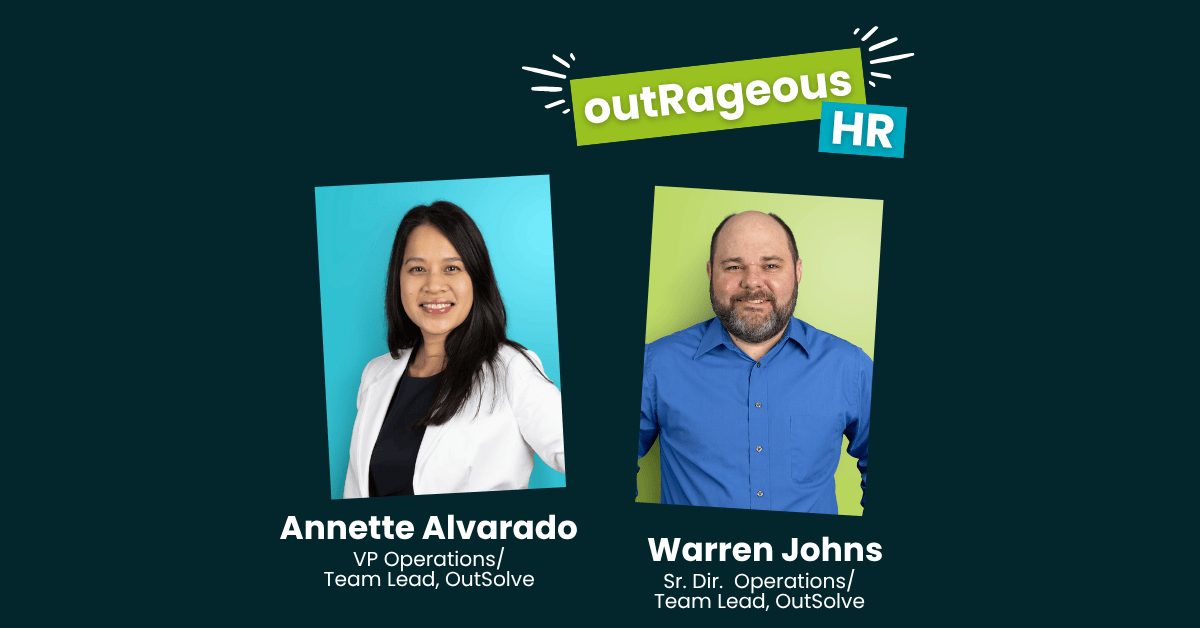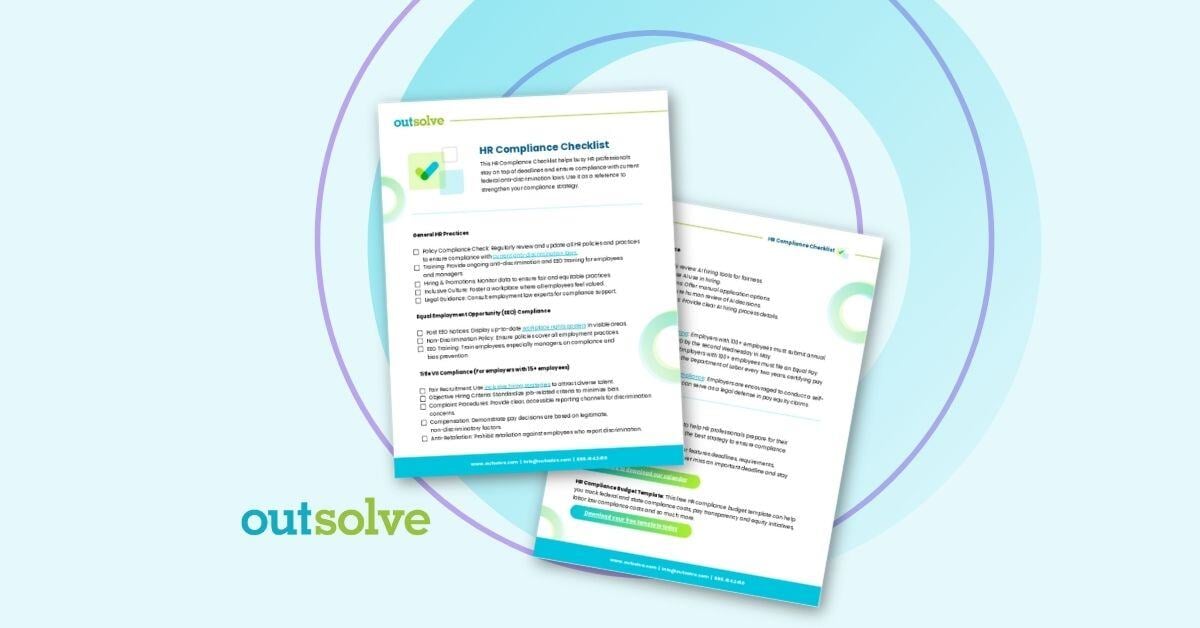4 min read
Executive Leadership: The New Front Line in I-9 Compliance
![]() OutSolve
:
Sep 16, 2025 8:10:35 AM
OutSolve
:
Sep 16, 2025 8:10:35 AM

Welcome to Part 2 of our 3-part research series, I-9 Compliance Trends: Enforcement Risks and Best Practices. With ICE audits escalating rapidly and fines growing exponentially, I-9 compliance is no longer just an HR issue—it’s a critical executive-level risk. This installment highlights why executive management must take ownership of compliance strategy, resource allocation, and internal governance to protect their organizations from financial penalties, reputational damage, and potential operational disruption.
We’ll break down the concrete actions C-level leaders, legal counsel, and department heads should take to build a culture of compliance from the top down—and why proactive investment in systems, training, technology, and policy is now a business imperative.
Executive Management's Role in Minimizing ICE Audit Risk
The dramatic increase in ICE enforcement activity has pushed employment eligibility verification compliance from a human resources concern to a critical business risk worthy of executive attention. Senior leadership teams that don't prioritize this compliance are playing with fire, as the financial and reputational consequences of an ICE audit can be severe and long-lasting.
The first step in minimizing audit risk is creating a culture of compliance that starts at the top. Executive management needs to clearly communicate that immigration law compliance is a non-negotiable business requirement and that all employees with hiring responsibilities are held accountable for maintaining proper documentation. This message should be reinforced through regular training, policy updates, and performance evaluations.
Organizations should conduct, or contract for, a comprehensive self-audit of their I-9 compliance before ICE does it for them. This means reviewing all I-9 forms for completeness and accuracy, identifying patterns of non-compliance, and implementing fixes. While self-audits can reveal uncomfortable truths about an organization's compliance situation, they provide a chance to address issues before they become the subject of government scrutiny.
Executive management should also invest in solid training programs for all employees involved in the hiring process. This includes not just HR personnel but also managers, supervisors, and anyone else who might be involved in verifying employee documentation. Training should cover both the technical requirements of I-9 completion and the broader legal framework governing employment verification.
Putting written policies and procedures in place is equally important. Organizations should develop comprehensive employee verification policies that clearly define roles and responsibilities, establish procedures for document verification and retention, and provide guidance for handling complex situations. These policies should be regularly updated to reflect changes in law and regulations.
Regular monitoring and oversight are essential parts of an effective program. Executive management should establish metrics for tracking I-9 compliance, conduct periodic reviews of hiring practices, and ensure that corrective actions are quickly implemented when problems are identified. This ongoing vigilance helps identify potential issues before they become serious compliance problems.
Perhaps most importantly, executive management must make sure that the organization has adequate resources dedicated to employment law compliance. This includes not just personnel but also technology systems, training programs, and legal support. The cost of maintaining a robust compliance program is minimal compared to the potential financial and reputational damage from an ICE audit.
HR and Legal Department I-9 Compliance Best Practices
The responsibility for day-to-day I-9 compliance typically falls to human resources departments, working closely with legal counsel. These teams serve as the first line of defense against ICE enforcement actions and must be equipped with the knowledge, tools, and procedures necessary to maintain strict adherence to all pertinent laws and regulations.
The foundation of effective I-9 compliance is establishing clear, consistent procedures for document verification. HR personnel must be trained to recognize acceptable documents, understand the various combinations of documents that satisfy I-9 requirements, and know how to properly record document information. This training must be updated regularly as document types change, and new requirements are introduced.
One of the most critical aspects of I-9 compliance is avoiding discrimination while ensuring proper verification. Federal law requires employers to accept any document that appears genuine and relates to the employee, regardless of the employer's preference for specific document types. Human Resources personnel must be trained to recognize when their document verification practices might accidentally discriminate against certain groups of employees.
For example, it’s important to know that employers are prohibited from specifying which documents prospective employees must present for I-9 verification. This serves several important anti-discrimination and practical purposes under the Immigration Reform and Control Act (IRCA).
This presents another compliance challenge. Forms must be kept for three
years after the date of hire or one year after employment termination, whichever is later. Organizations must develop systematic procedures for storing these forms securely while ensuring they remain easily accessible for inspection. Electronic storage is allowed but requires additional safeguards to ensure document integrity and prevent unauthorized access.
Re-verification of work authorization presents particular challenges for HR departments. Employees with temporary work authorization must have their documents re-verified before their authorization expires. This requires systematic tracking of expiration dates and proactive communication with employees to ensure timely re-verification. Failure to properly re-verify can result in substantial penalties and may indicate a pattern of non-compliance to ICE auditors.
Recommended Executive Management Actions
Following are a series of actions that will improve the accuracy and completeness of an organization’s Form I-9 management processes.
- Risk Assessment to Achieve Leadership Alignment
- Expand I-9 compliance to include C-suite and General Counsel
- Schedule an executive briefing on current ICE enforcement surge (1,800+ NOIs issued in first half of 2025 vs. 230 for all of 2024)
- Conduct Internal I-9 (Employment Eligibility Verification) Audit
- Commission comprehensive I-9 self-audit
- Review I-9 form completion process and retention protocol
- Identify gaps
- Policy and Governance Framework
- Develop comprehensive I-9 compliance policies covering all hiring processes and document verification
- Create clear escalation procedures
- Training and Communication
- Initiate I-9 program management training for hiring managers
- Identify a team member who is responsible for monitoring changes in employment laws and regulations
- Establish regular training updates for appropriate staff members about changes in employment law and regulations
- Technology Investment
- Evaluate and procure automated I-9 management system to replace manual processes
- Ensure system integration with existing HRIS, ATS, and payroll systems
- Implement automated alerts for re-verification deadlines and compliance monitoring
- Establish electronic document storage with proper security and retention protocols
- Monitoring and Continuous Improvement
- Develop compliance dashboard for real-time visibility into I-9 status across organization
- Create regular reporting structure to executive team on compliance metrics and issues
- Plan for compliance program scalability as organization grows
- Key Performance Indicators
- Identify and correct any I-9 violations found in internal audits
- 100% completion rate for required compliance training
- Automated tracking of all re-verification deadlines
- Regular legal review of compliance program effectiveness
- Documented compliance culture throughout organization
Conclusion
As ICE enforcement accelerates, the organizations best positioned to thrive are those whose executive leaders view I-9 compliance not as a burden, but as a vital aspect of operational risk management. A strong compliance culture starts at the top—and when leadership prioritizes governance, training, technology, and continuous improvement, the entire organization benefits.
In Part 3, we’ll break down why automation is no longer optional in today’s I-9 compliance environment. You’ll learn how modern digital tools can reduce risk, streamline verification, and help your organization stay audit-ready at scale.
Download the full research report, “I-9 Compliance Trends: Enforcement Risks and Best Practices,” for a comprehensive look at the data, trends, and strategies shaping the future of employment eligibility compliance.
Additional Articles
- Part 1: I-9 Enforcement Reignited: ICE Cracks Down in 2025
- Part 3: Automate or Audit: Why Manual I-9 Compliance Is No Longer Safe
Founded in 1998, OutSolve has evolved into a premier compliance-driven HR advisory firm, leveraging deep expertise to simplify complex regulatory landscapes for businesses of all sizes. With a comprehensive suite of solutions encompassing HR compliance, workforce analytics, and risk mitigation consulting, OutSolve empowers organizations to navigate the intricate world of employment regulations with confidence.
Weekly OutLook
Featured Posts

New Year, New Deadlines: 2026 HR Compliance Calendar

outRageous HR: Plan Now or Pay Later
Related Posts

In-House or Outsourced I-9 Management: Which Is Best for Your Organization?
Every U.S. employer, regardless of size or industry, is required by law to confirm each new hire’s identity and verify that they are authorized to...

outRageous HR: Building a Compensation Strategy That Actually Works
If your compensation strategy is mostly “gut feeling” plus whatever you did last year… it’s time to rethink your approach.

HR Compliance Checklist: What Every HR Pro Needs to Know
During times of sweeping change to federal laws, and with new state laws being enacted, it's more important than ever for HR professionals to ensure...

